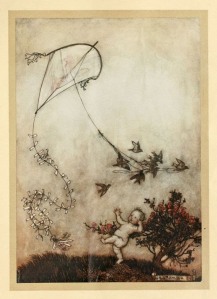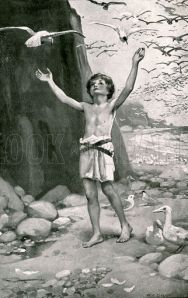In Chapter 2 of Winnie-the-Pooh, “…IN WHICH POOH GOES VISITING AND GETS INTO A TIGHT PLACE”, Pooh find himself stuck in Rabbit’s front door – the epitome of the “friend who just won’t leave” – because of gluttony and a lack of manners.
The scene is comical, true, but it also demonstrates Pooh’s lack of self-control – and more importantly his lack of manners. If we run through a checklist of everything he did, it looks bad:
-Entering Rabbit’s home uninvited
-Eating all of Rabbit’s food
-Deciding to leave immediately after the food was gone
-Complaining about his situation (That he clearly caused)
-Forcing his friends to care for him and continued to make demands of them
It is interesting to me that these things are still considered by many to be poor form. I cannot count the times I was browbeat into having decent manners by my parents, and I remember even as a kid watching other kids doing “the wrong thing” and wondering why.
The reasoning behind it seems clearer to me now, and I see these manners faux pas as a failure to be a good friend. Pooh’s greed and selfishness – which is already well established – is not as happy-go-lucky as some people think; he actively uses his friends and when they have nothing more to give him, he moves on. He sees people as ways to get things he wants:
“‘If I know anything about anything, that hole means Rabbit,’ he said, ‘and Rabbit means Company,’ he said, ‘and Company means Food…'” (Milne, CH2)
I see this attitude as the “me first” – and really “me only” – attitude that Pooh applies to his interactions with others. Even at the end of the story, it is all about him:
“So, with a nod of thanks to his friends, he went on with his walk through the forest, humming proudly to himself.” (Milne, CH2)
He proudly hums walking away, as if he did a good job. This is of course after he did nothing except sat there, blocking the entrance, being read to, and generally inconveniencing his friends. Pooh is, in my opinion, an excellent example of “those kids” your parents told you not to hang out with as a kid.






